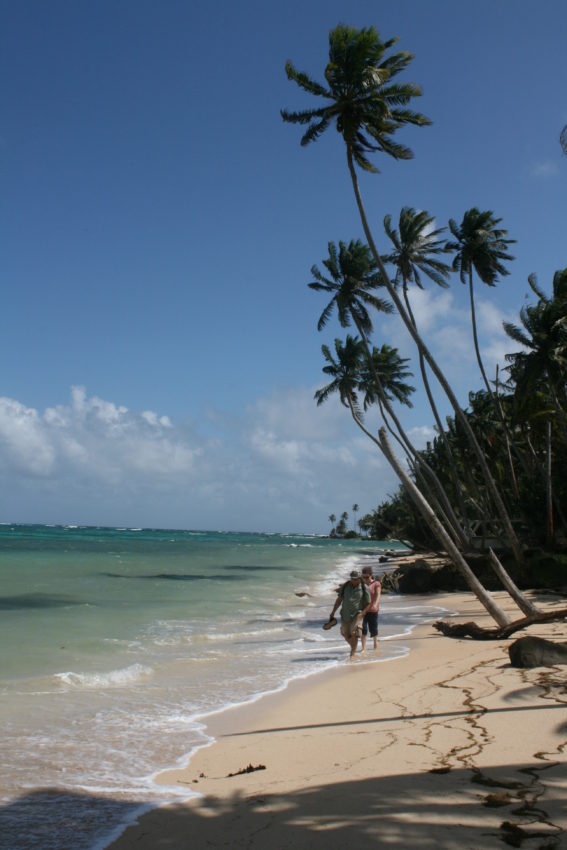Old-school Caribbean cool on Nicaragua’s Corn Islands

“This is the coolest part of Nicaragua,” said Randy, his braided cornrows darkening with the setting sun. “There is no police, no politicians, none of those rude boys.”
No need. Little Corn Island is a little more than a half a square mile. If you can negotiate a couple of rock outcroppings, you can walk on the sand and past a sentry of palm trees all the way around the island in less than an hour. The only mode of transport on wheels here is a wheelbarrow.
Great Corn Island is 2.3 square miles, big enough to warrant one narrow road that loops around it but small enough to feel you’ve reached an untapped paradise. I have baked on beaches in 18 countries along the Caribbean, and my beach on Great Corn is one of the best I’ve ever seen.
Only two simple bungalows marked a half-mile stretch of golden sand and gentle surf. Every morning at 6:30, I’d watch workers rake the sand before Costa Caribe, the local semipro baseball team, jogged along the empty beach in a hodgepodge of pitching sleeves and ballcaps.
My Picnic Center bungalow, named for local islanders’ favorite holiday pastime on this beach, had exquisite food that put a tux on the simple, open-air beach-side dining area.
Steamed yellowtail splashed with local vegetables, heaping fruit salads of fresh pineapple, mango, watermelon and papaya and, of course, rundown, the traditional Nicaraguan soup of fish, coconut milk, plantain and whatever else they have lying around. In this part of Nicaragua, you get more than gallo pinto, Central America’s rice-and-beans diet staple.
Except for holidays, particularly Easter, the Corn Islands are never crowded. The only industry is fishing, leaving the waters clear and the marine life vibrant. Scuba diving and snorkeling are nearly virgin.
Scenic underwater, too.
On one dive on Great Corn, I saw a 6-foot nurse shark and huge schools of yellowfin with 100 feet of visibility. The east side of Little Corn features hammerhead sharks and a network of caves, but a couple of storms (the island can get windy) kept boats from going to that part of the island during my visit.
But snorkelers reported seeing stingrays and barracuda.
“When I leave the island, I want to come back the same day,” said Wyvon Hansack, a cook/guide/general bon vivant on Little Corn.
In the Corn Islands, you can leave your Spanish phrasebook in your backpack. English is the first language. British pirates patrolled these waters in the 1700s and African slaves were imported to grow corn and give the islands their name.
The Brits left in 1786 but returned in 1841 after Nicaragua’s independence from Spain. Some of the older residents don’t even speak Spanish. And no one here considers themselves Nicaraguan.
“I am Caribbean because I live on an island,” said Roy Carter, a snorkeling guide on Little Corn. “It’s nice, man. This island, man, is like a virgin island in the Caribbean.”
There’s a good reason. It’s a pain to reach. Many go during an extended overland journey through Central America. Me, I took advantage of Frontier Airlines’ direct red-eye from Denver to San Jose, Costa Rica. San Jose is a nine-hour, $26 bus ride to Managua, Nicaragua’s capital.
However, I picked the one Sunday when some of the 200,000 Nicaraguan expats in Costa Rica went home for a visit. All eight buses going north were filled. I shelled out $238 to Copa Airlines for the 45-minute flight to Managua, where the next morning I took a $164, 75-minute La Costena flight to Great Island’s tiny airport. Then there was the sometimes-harrowing, 45-minute motorboat ride to Little Corn.
It took three days. Then again, if Frontier flew direct from the U.S. to the Corn Islands, they wouldn’t be the Corn Islands. They’d be the Hawaiian Islands.
I paid that price. And on vacation, I was cool like ice.

